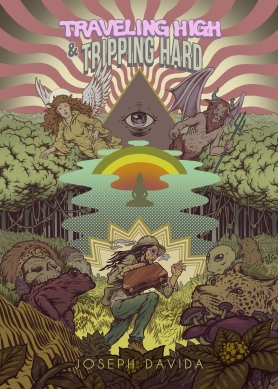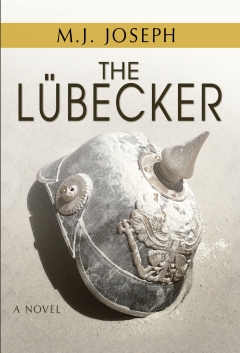In the process of writing this book, an
extremely difficult journey that has taken years, I was taken to unfamiliar
destinations and exposed to unfathomable pain. Part of that pain was learning
that I was created through the atrocities of incest by a brutally manipulative
monster and, while only moments old, denied by a heartless grandmother who
never bothered to look at me. Another difficult truth is
that I was carried
in the belly of an immature, vulnerable child, connected by the lifeline that
carried the blood-rich oxygen and nutrients from her to me, only to be rejected
by her from my first breath. My intention for this book is to provide insight
into the consequences of family secrets, conspiracy, lies, and denial. Told
from my perspective, this is my family story, a snapshot of four women
irreversibly scarred by traumatic abuse.
First, the family matriarch, a prolific mother
of ten, sets the tone for the women who would place their feet in the
footprints of her journey, transforming her ancestry for generations to come.
Her story sheds light on the transgressions she not only allowed but
participated in.
Next, there is the girl who endured the death of
her childhood at the hands of incest, abuse, betrayal, humiliation, rape, and
the inevitable birth of a child. Well before puberty she was sexually exploited
in her own home, her childhood, mind and body all repeatedly violated.
Then, there is me Catherine, I Am the Product
of Rape—A Memoir. I am an adoptee, I am a daughter, and I am a mother of
three. In search of my future, I found the weighted baggage of the past.
Catholic Social Services documents helped to chronicle my life, as did the many
conversations I have had over the years with sometimes very reluctant people―relatives,
social workers, and paper pushers, all of whom seemed to guard my past as it
floundered aimlessly, leaving lingering, unanswered questions. I found
and met my mother well into my adulthood, listening intently as she exposed the
atrocities which resulted in my birth. She transmitted the pain of a denied
childhood to me like the nutrients fed to a fetus through an umbilical
cord. My heritage lay bare; I was speechless as my mother's portrait of
her sexual violation crushed me. I was faced with her reality, my subsequent
reality, and with what was yet to come.
Finally, along this sexual-abuse sojourn, I
unfortunately discovered my daughter's devastating experience. Crushing my very
core, this revelation sent my life careening in another unexpected direction,
straight through my children's lives into a fourth-generation nightmare. The
ripple effects of demoralizing incest, the sexual slavery of serial rape, and
the brutality of molestation go beyond their impact on the direct victims,
transmitting a trauma that oozes generationally. I Am the Product of Rape- A
Memoir is a story that intertwines the DNA of my family's bloodline.
I recognized that my family was not alone in its
experiences. In coffee shop discussions, at restaurants, through emails, and
during airplane conversations, I found incest, rape, and molestation to be
shrouded in secrecy and buried in the psyches of many women. They however, were
often interested in discussions, though almost always those discussions would
be on behalf of a friend. Instinctively, in many cases, I believe some
of these vulnerable victims were uncomfortable or unwilling to reveal their
stories firsthand, owing to the shame, stigma, heaviness or guilt that make
them reluctant to bring such ugliness to light. Often overlooked, excused, and
even denied, abuse takes on infinite forms ― this is especially true of
psychological abuse. Thus my daughter and I birthed I Am the Product of
Rape—A Memoir to become the platform for victims.
Unlike those who came before us, my daughter and
I believe victims deserve compassion, a chance to tell their own story, and the
peace of mind that comes from knowing ― whether or not they can accept this
truth at the present time ― that they're worthy, unique individuals with
dignity and a purpose on this planet. After a while of partaking in these
discussions I quickly discovered that 98% of respondents knew someone friend
or relative who had been raped; 96% had been raped; 50% had unreported
exposure of incest during childhood by a family member; 80% had not received
mental health services but were willing to receive mental health services if
their confidentiality would be maintained; 100% never reported incest,
molestation or sexual assault to authorities; 40% were raped in marriage by
their spouses; 100% had or have feelings of guilt and self-blame; 85% struggle
in personal relationships; 20% were mothers of a child who raped his own sister
and never sought help for the children nor themselves.
I can personally testify that I know there is a
purpose in all that I've been through. The events described in I Am the
Product of Rape—A Memoir led me to the great privilege of reaching out to
others with a story in which, somehow, horror becomes hope. Lastly, as this
book comes to its conclusion, and with the realization of my daughter’s
unwarranted pain, I took comfort in realizing that together our life’s
narrative includes advocating on behalf of victims of incest. We are dedicated
to raising awareness regarding this and its related subjects, which are most
often overlooked, or from which most people easily disconnect themselves. As my
daughter and I take you through our journey, remember that we are committed to
stopping the intergenerational trauma within our family and we are hopeful that
this book and our message help to free others in some small way.
About the Authors
Catherine Wyatt-Morley is the founder, chief executive
officer and heartbeat of Women On Maintaining Education and
Nutrition, a 501(c)(3) nonprofit social service organization for the
at-risk and HIV-positive community. In 1994, Wyatt-Morley founded Women On
Reasons To Heal (W.O.R.T.H.), the first and what has become the oldest
HIV-positive women’s support group in Middle Tennessee.
Wyatt-Morley
has appeared in countless media outlets nationwide, including SELF Magazine,
the Today Show, A&U Magazine, POZ Magazine, CNN, Voices of America, MSNBC,
Talk America Radio, FX Radio, SiriusXM Satellite Radio, the Palm Beach Post,
the Indianapolis Indiana Recorder, the Los Angeles Times, the Canadian Sun,
Nashville Scene, and the Tennessean.
Jalyon Welsh-Cole has been director
of Women On Maintaining Education and
Nutrition, a 501(c) (3) nonprofit social service organization, since 2010.
Welsh-Cole began writing when she was very young, starting with short stories
and poems. As a teen, she was inspired to draw, finding comfort and creativity
in her art. She joined forces with Wyatt-Morley to share her story in I AM THE PRODUCT OF RAPE – A MEMOIR. Together,
they also have created #HealingSecretHurts workshops,
which bring the spectrum of traumatizing sexual assault into the light.
WEBSITE & SOCIAL LINKS:












